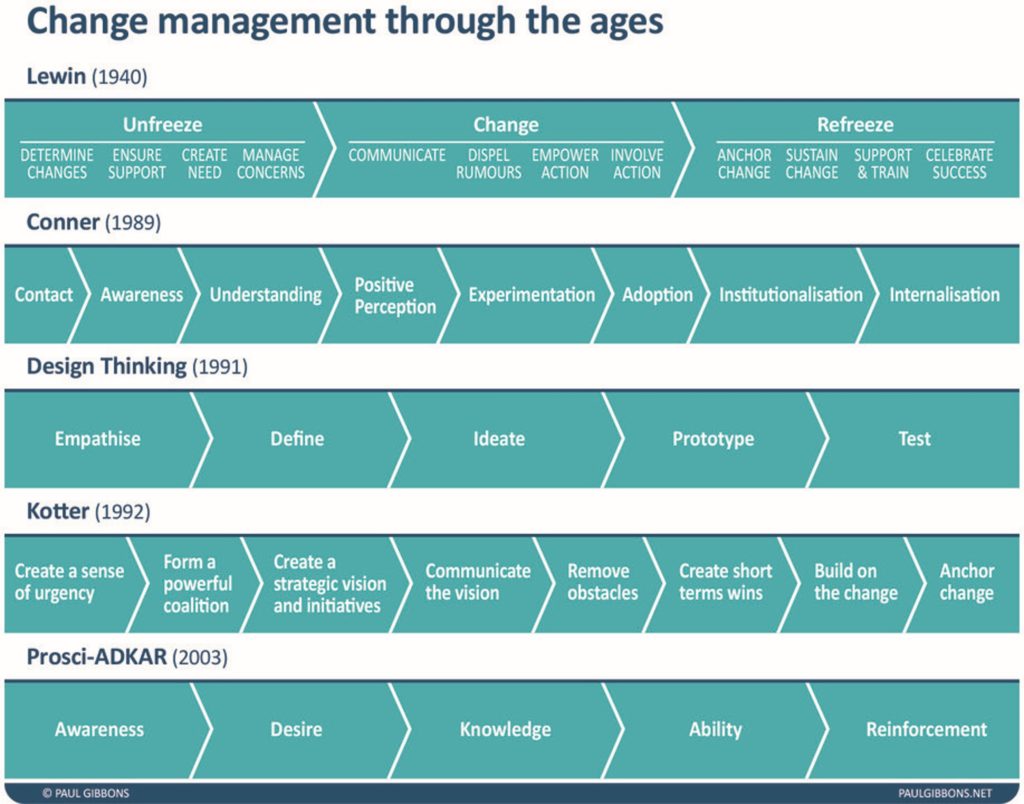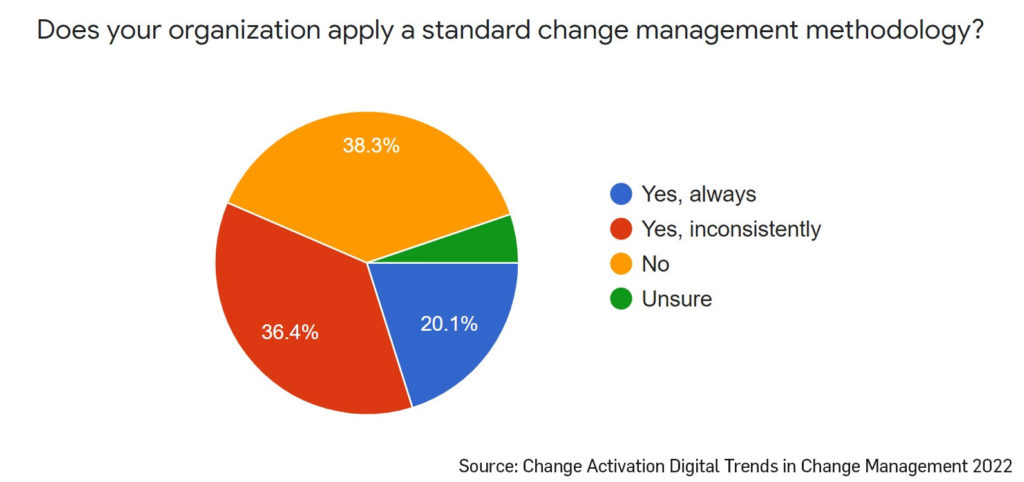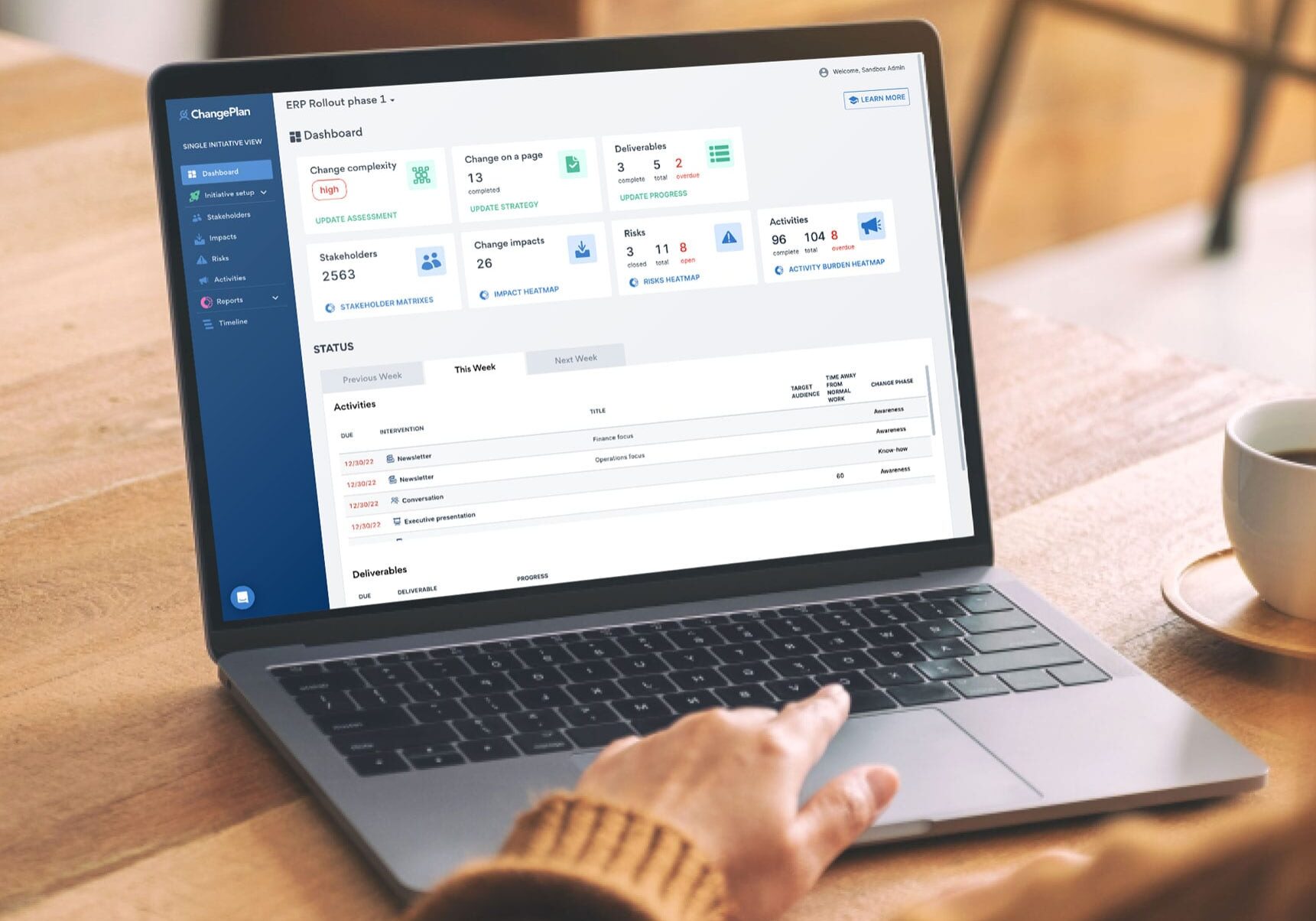Last week I was asked to lead a series of workshops on change leadership for a group of senior leaders.

My slide deck, one that I’ve been using for several years now, features Paul Gibbons’ useful diagram of ‘change management through the ages’.
I usually move relatively quickly through this primer on the background of thinking when a comment popped in through the Zoom chat window. “They all look the same”.
I laughed, paused and wondered out loud “I wonder whether we aren’t moving beyond change management methodologies?”
(At Change Activation, we created our own guide to change management models that you can download here.)
How commonly used are change methodologies?
Change Activation recently conducted our latest research survey focused on Digital Trends in Change Management. As we’ve begun analyzing the results, we have been surprised to learn two things.
Firstly, only 1 in 5 people reported using a standard change management methodology consistently.

The most widely used change approach doesn’t belong to anyone
Secondly, the approach most respondents reporting using isn’t Prosci, Kotter, Lewin, Bridges, or any proprietary methodology for that matter.
Custom made
The top response is that change managers are using their own custom approaches to organizational change. Approaches that have been created taking into consideration their knowledge of methodologies, but reimagining these in their own ways that are fit for purpose for their organizations.
Business school lessons

It reminds me of learning about Porter’s Five Forces Model at business school. In group work and consulting assignments my classmates and I diligently applied Porter’s model to help us performing our analysis of a particular industry.
Since graduating business school (over a decade ago now), I’m yet to see someone, anyone, work through each of the steps of a five forces analysis.
During work meetings, I’ve heard colleagues occasionally name-call models like Porter’s Five Forces. Then, rather than working through the analysis in a step-by-step manner, they invariably just create their own stripped down reports and workflows to suit their situations.
As theoretical constructs, models like Porter’s Five Forces are useful to encourage us to understand a domain. However in the boilerroom context of the busy workplace, we have quicker, leaner ways of working that are more fit for purpose.
Are we over it?
Whilst formal change methodologies have been instrumental in bringing discipline to the emerging discipline of organizational change management, perhaps we’ve reached a tipping point.
Although accreditations in some methodologies have become defacto requirements for practicing change management, perhaps there is a reasonable case that this is just like an MBA being an entry point into certain career paths. With models like Porter’s Five Forces background knowledge but rarely actually deployed.
The thing that strikes me is how ‘over’ change methodologies so many people that we speak with are. A client complained earlier this week that one of their main gripes with traditional methodologies is that they can be quite administratively heavy.
How this has affected our work at ChangePlan
When our team started work building our solution ChangePlan, we had the intention to create a platform that can work alongside any change management approach.
This is because we know that all change methodologies require you to do three basic things:
- understand what the change is
- consider who the change will impact
- plan how best to help people through the change

ChangePlan lets you enter the data once. It can be reused and easily edited, updating auto-generated heatmaps in real time.
ChangePlan also pulls impact data from multiple change initiatives into a single heatmap so that you can assess the impacts across the whole business. This is online visibility makes it easy to take leaders through the information and help them make critical decisions.
Instead of designing your change management activities – communications, workshops, training, meetings and the like in Excel or Word or Powerpoint, you can capture them directly into ChangePlan. It not only helps you to link the activities to the stakeholders and the impacts, it automatically generates a timeline in a Gantt Chart view.
Enter data into your platform only once
In working through these steps, you’ll naturally gather data. Whether it is by meeting employees, conducting interactive experiences using human centered design principles, ideating via LEGO Serious Play. There’s always data. And this must be recorded somewhere.
We designed ChangePlan so that you can continue using your methodology or framework that you already use today.
Your company methodology might require you to first capture data in an Excel spreadsheet, then summarise it in a table in PowerPoint for Word so that you can take leaders through your findings to validate. With ChangePlan, your data goes into an intuitive system and is automatically summarised, and can (if you wish) even be made available in real-time to leaders.
I have heard some change managers spend hours creating and maintaining impact heat maps to help their business understand the magnitude of the change and how much effort will be required to support employees during the changes.











